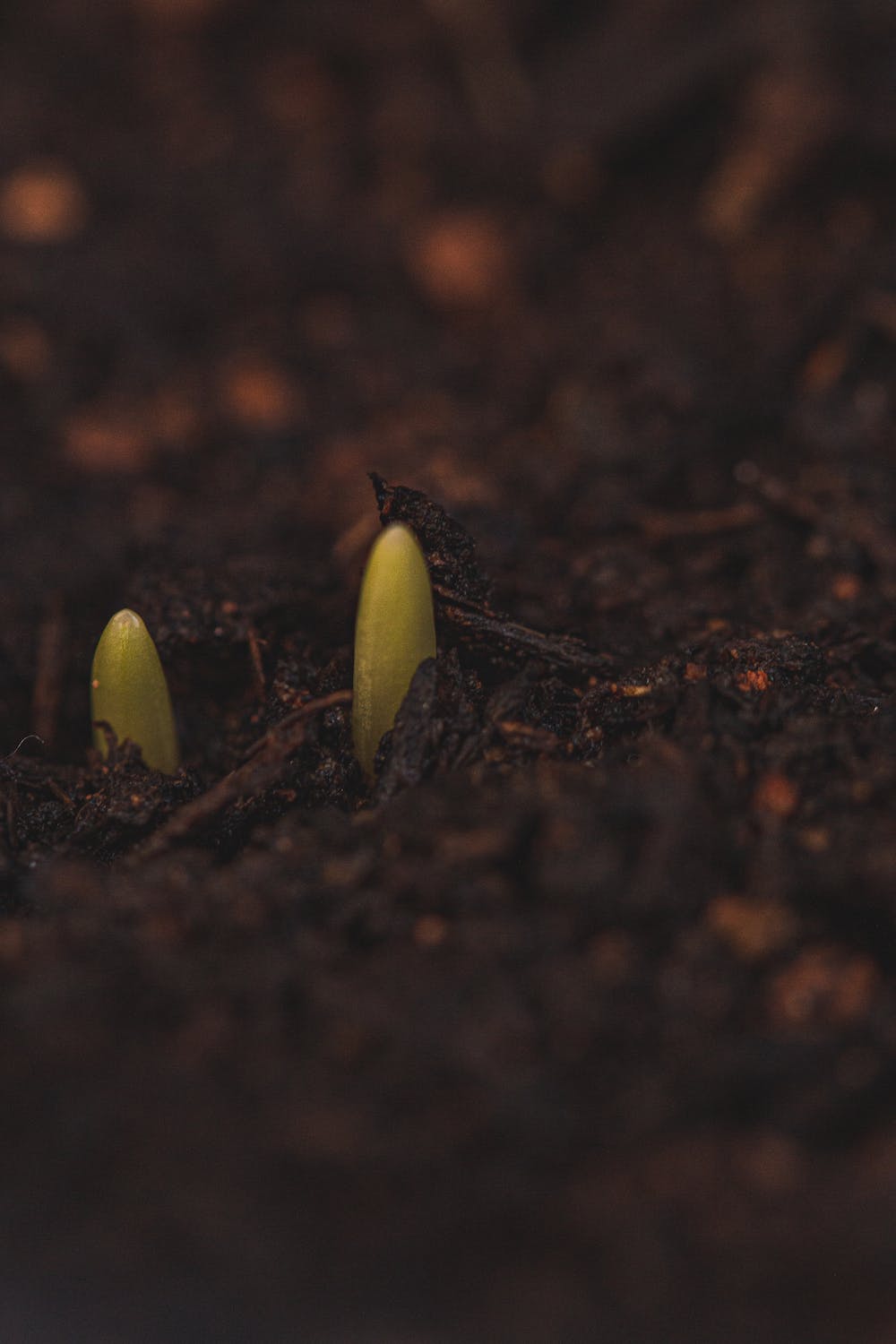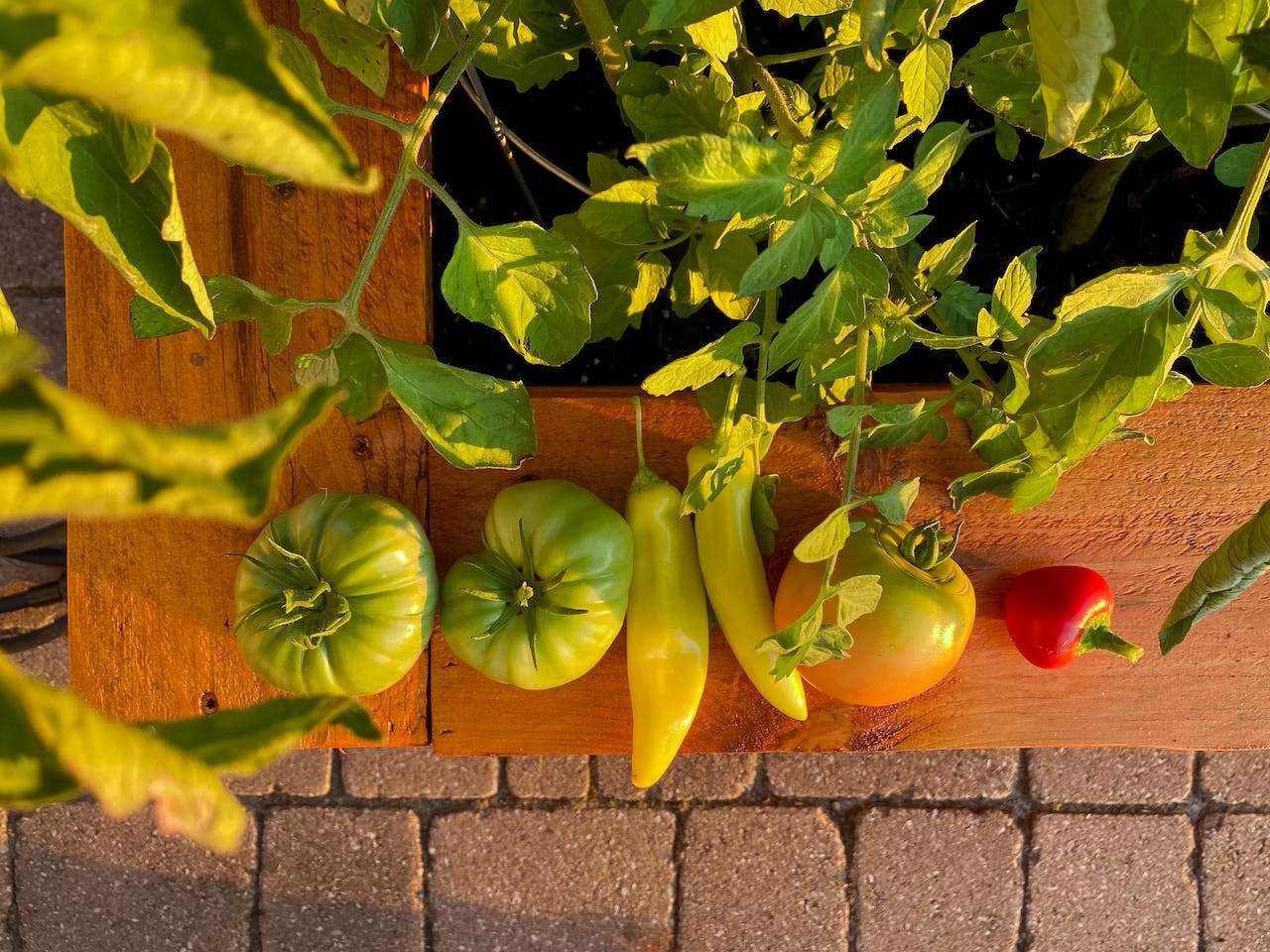
The melody of spring is in the air, and gardeners like you and me are humming with anticipation! Can you hear it? It’s the gentle trill of birdsong, the rhythmic patter of raindrops, and the soft whisper of seeds dreaming beneath the winter slumber. Yes, spring is calling, and it’s time to answer with the joyous symphony of a flourishing vegetable garden!
But before we dive headfirst into seed packets and watering cans, let’s pause and listen to the wisdom of the soil. Spring’s grand performance needs a well-rehearsed stage, and preparing your vegetable garden now is the key to a season overflowing with delicious rewards.
Think of this blog post as your backstage pass to a bountiful harvest. We’ll explore the essential steps for prepping your garden, from assessing the winter’s tale whispered in the soil to building the perfect stage for your veggie stars. We’ll talk about sunlight, drainage, nutrients, and the magic of compost. We’ll discuss seed starting indoors, crafting a planting calendar, and setting up trellises that reach for the sky. And of course, we’ll touch on pest control and natural defenses, ensuring your garden sings with harmony throughout the season.
So, grab your gardening gloves, a steaming cup of coffee, and let’s step into your garden together. Spring’s symphony awaits, and with a little preparation, your vegetable patch will soon be bursting with life, laughter, and the sweetest melody of all – a harvest grown with your own two hands.
Are you ready to maestro your own veggie orchestra? Let’s get started!
Assess Your Garden Space
Peeling back the frost reveals the garden’s winter story. Take a good stroll, eyes peeled for hidden clues. Did heavy rains leave behind gulleys in your beloved veggie patch? Are dead branches casting long shadows, stealing sunlight from precious corners? Has the wind-sculpted snowdrifts into new, fertile mounds? Each mark tells a tale, guiding you towards adjustments and improvements.
Now, let’s talk sunlight. Each plant thrives in its own tempo of sun exposure. Leafy greens, for example, sway happily in a morning chorus while sun-loving tomatoes bask in the midday spotlight. Grab a notebook and map your garden’s sunlight patterns. Sketch where the sun paints the landscape first and where it lingers last. This solar map will be your guide when choosing the perfect stage for each veggie star.
Drainage is another key player in the garden’s performance. Heavy rains shouldn’t leave your carrots waterlogged and weeping. Observe how water flows (or pools) after a downpour. Are there areas that need a gentle slope adjustment? Maybe raised beds could offer a dry haven for your finicky herbs. Don’t be afraid to get creative – think swales, French drains, or even strategically placed rocks. A well-drained stage keeps the drama out of your veggie patch.
Finally, let’s consider the grand finale – expansion or modification. Maybe your beet battalion needs a bigger barracks, or perhaps the zucchini brigade has outgrown their corner. Sketch some layout ideas, keeping sunlight, drainage, and your own gardening rhythm in mind. Think about companion planting, where different veggies team up for mutual benefit. You could even create dedicated zones for specific crop rotations. Remember, your garden is a dynamic play, and you’re the director!

Prepare Soil
Imagine your soil as a choir, each plant playing its own tune. But just like singers need the right pitch, plants thrive within a specific pH range. So, grab a soil test kit (or head to your local garden center) and discover your soil’s hidden melody.
Is it a bit too acidic, like a sour soprano? Or perhaps a touch alkaline, booming like a baritone gone rogue? Fear not, maestro! We can adjust the pitch with natural amendments like lime for acidity or sulfur for alkalinity. Remember, a harmonious pH keeps the choir singing in perfect unison.
Now, let’s talk about the music itself – nutrients! Just like any good performance, plants need a balanced diet to flourish. Another soil test will reveal your soil’s nutrient levels – are the nitrogen drums thumping too loud, or are the phosphorus strings a bit weak?
Don’t worry; we can fine-tune the orchestra with organic reinforcements. Compost, the king of soil amendments, adds a rich blend of nutrients and boosts microorganism activity, like a supportive chorus line. Aged manure and other organic matter join the band, adding vital minerals and improving drainage. Remember, well-nourished soil fosters robust plants that belt out bountiful harvests.
Finally, let’s ensure the air is flowing freely for our subterranean performers. Think of tilling and aerating as adding air pockets to the stage, allowing roots to dance and breathe. A gentle double-digging in fall or winter loosens compacted soil, while a spring tine cultivator fluffs up the top layer for easy seed sowing.
Don’t forget about cover crops like rye or clover – these green understudies break up heavy soil and add organic matter as they decompose. Remember, good air circulation gives the roots room to roam and keeps the whole performance lively.
Plan Your Crops
Look for varieties specifically bred for your region’s climate and soil conditions. These stars are prepped to handle the temperature tantrums, the sunshine serenades, and the occasional rain downpour that your area throws their way.
Seed catalogs and local nurseries are your treasure maps, overflowing with regional veggie gems. Think heat-resistant tomatoes for sizzling summers, or cold-loving kale for chilly springs. Remember, locally adapted actors thrive under the spotlight, giving you a drama-free, bountiful performance.
Next, master the art of timing. Each veggie has its own preferred entrance – some sashay in under the cool spring spotlight, while others wait for the summer sun’s grand entrance. Consult your trusty planting calendar (or download a handy app!) to discover your actors’ ideal debut dates.
Don’t let a frost-sensitive tomato strut onstage too early or a heat-loving pepper miss its summer solo. Remember, respecting their timing ensures your stars shine at their brightest, delivering peak performances throughout the season.
Finally, it’s time to map out your veggie play! Sketch a planting calendar, noting each actor’s entrance date and preferred stage space (consider sunlight, spacing, and companion planting). Think of it as a backstage blueprint for your garden’s success.
Will the tall sunflowers tower over the lettuce chorus? Can the zucchini band share the stage with the cucumber quartet? Remember, a well-planned layout avoids on-stage clashes and ensures every veggie gets its moment in the spotlight.

Start Seeds Indoors
Shallow trays with drainage holes are ideal, allowing roots to breathe and excess water to escape. Seed starting mix is their playground – lightweight, nutrient-rich, and free of pesky weeds. Fill your trays, leaving a ½ inch gap at the top, and mist the mix until it’s damp but not soggy.
Check your seed packet for spacing instructions – some like to spread out, while others prefer a cozier crowd. Gently press the seeds into the soil, covering them with a thin layer of mix. Think of it as tucking them into a snug blanket for their pre-performance nap. Remember, proper depth gives your tiny actors the perfect start.
Watering these little divas is a delicate dance. Too much and they drown, too little and they wilt. A handy spray bottle is your best friend, delivering gentle mists that keep the soil evenly damp. Avoid overhead watering, which can wash away seeds and compact the mix. Remember, consistent moisture is key, but waterlogging is a major drama queen to avoid.
Seedlings crave sunshine, even indoors. Place your trays near a sunny window or invest in grow lights that mimic the natural rhythm of day and night. Aim for 12-16 hours of light daily, and watch your tiny stars stretch and sprout with glee. Remember, adequate light fuels their green ambitions, guiding them towards healthy growth.
When your seedlings have sprouted true leaves and look a bit leggy, it’s time for their big act – transplanting outdoors! Harden them off by gradually exposing them to cooler temperatures and wind for a week or two. Then, choose a day with mild weather and carefully dig individual holes in your prepped garden bed. Gently ease the seedlings from their trays, disturbing the roots as little as possible, and nestle them in their new homes. Remember, a smooth transition sets them up for success on the outdoor stage.
Build Garden Infrastructure
For some of your veggie stars, the sky’s the limit! Climbing plants like peas, beans, and tomatoes crave a vertical stage to twirl and reach for the sun. Enter trellises and stakes – the scaffolding of your garden. Choose materials like sturdy wood, metal poles, or even repurposed branches. Trellises can be simple A-frames, elegant arches, or playful teepees – let your creativity flow!
Stakes, meanwhile, offer individual support for smaller climbers. Remember, proper support keeps your actors off the ground, away from pests and diseases, and basking in optimal sunlight for maximum yield.
Hydration is the lifeblood of your veggie orchestra, and a well-designed watering system ensures everyone gets their fair share. Soaker hoses snaking along your planting beds deliver water directly to the roots, minimizing evaporation and keeping leaves dry. Drip irrigation systems offer even greater precision, targeting individual plants with gentle drips. Rain barrels collect precious rainwater, reducing your reliance on tap water and adding a sustainable touch to your garden.
Remember, consistent moisture keeps your actors singing, but waterlogging can lead to off-key drama. Choose a system that suits your needs and your stars’ water preferences.
Think of mulch as the cozy costume for your garden’s soil. A layer of organic material like straw, shredded leaves, or wood chips insulates the soil, retaining moisture, suppressing weeds, and regulating temperature. Mulch also creates a welcoming habitat for beneficial insects like ladybugs, your natural pest patrol.
Even the most harmonious symphonies can face discordant notes in the form of pesky critters. To keep your veggie stars safe and sound, consider natural pest control methods like companion planting, where certain herbs and flowers can deter unwanted guests. Diatomaceous earth, a fine powder made from fossilized algae, can also be sprinkled around plants to create a physical barrier against crawling insects. For persistent intruders, fencing can offer a more robust defense.
Choose materials like chicken wire or netting to create a barrier against rabbits, deer, or other larger pests. Remember, proactive pest control ensures your veggie stars perform without fear of interruption.
Final Thoughts: Preparing Your Vegetable Garden For Spring
Don’t be afraid to get your hands dirty, experiment with new techniques, and let your creativity blossom. There’s nothing quite as rewarding as harvesting food you’ve nurtured from seed to plate. Share your bounty with loved ones, celebrate the rhythm of the seasons, and savor the sweet satisfaction of a garden grown with your own two hands.
Spring’s symphony has just begun, and you, my fellow gardener, are the conductor! So grab your gardening gloves, raise your tools in a toast to the sun, and get ready for a season overflowing with life, laughter, and the most delicious melody of all – a bountiful harvest grown with your own green magic.
Happy planting, and may your garden sing with joy all season long!
And one last tip: Keep checking back here for more gardening tips, tricks, and inspiration throughout the season. We’ll be exploring seasonal planting guides, harvesting techniques, delicious recipes, and much more. Let’s keep the spring symphony playing all year long!

![How to Grow Kale in Your Home Garden [+ Delicious Kale Recipes]](https://homeveggiegarden.com/wp-content/uploads/2023/12/pexels-eva-bronzini-5758074-600x850.jpg)



